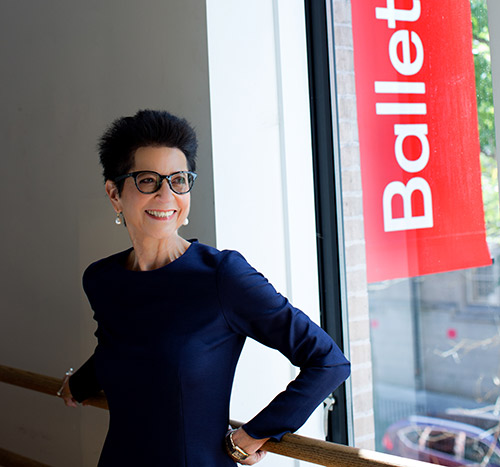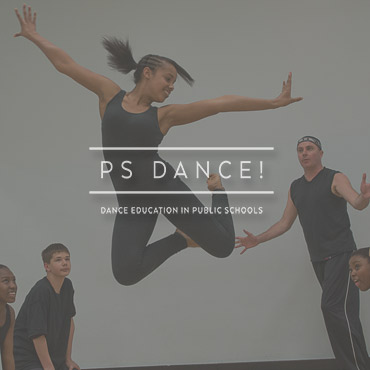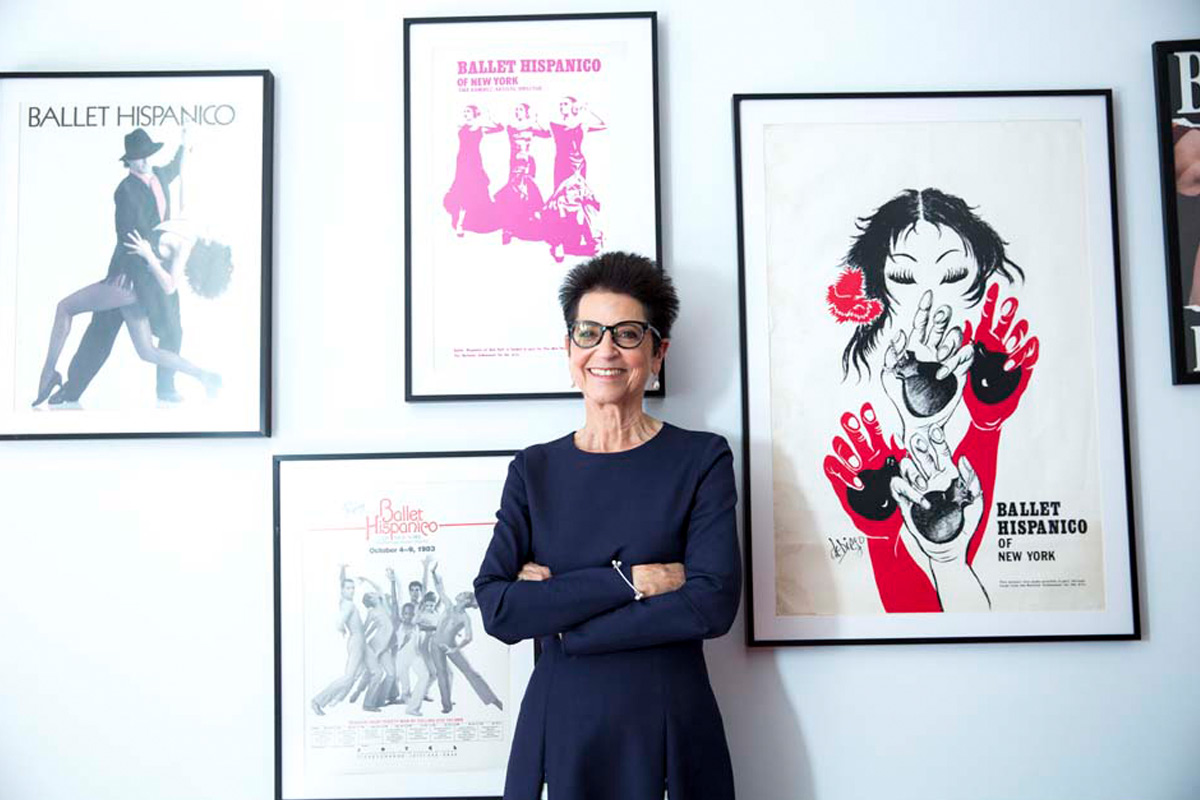Jody Gottfried Arnhold (M.A. ’73) is passionate about dance. Her own story suggests a 19th century narrative ballet. The plot ranges from her decision to teach public school during the budget-strapped 1960s to her emergence as a national voice in dance education – as Founder of 92Y Dance Education Laboratory (DEL), Co-Chair of the New York City Department of Education Blueprint for Teaching and Learning in Dance, Pre K-12, Chair (and now Honorary Chair) of Ballet Hispanico and executive producer of the recent EMMY-nominated documentary PS DANCE!.

Jody Gottfried Arnhold (M.A. '73) (Photo Credit: Deborah Feingold)
Now, in a spectacular development that reconnects her to dance education’s very beginnings, Arnhold and her husband, John, have given $4.365 million to establish a new dance education doctoral program at Teachers College. The focus is on preparing master dance educators – the teachers of aspiring dance teachers – along with dance researchers and policy experts who will advance Arnhold’s ultimate goal: making dance education a staple in American public schools.
“We squirm before we squawk,” Arnhold said this past fall at her Upper West Side apartment. Elegant and trim, with striking dark hair, she looks ready to step onstage at La Mama or Triskelion Arts. “Yes, literacy, yes, math, but principals must understand that the arts build artistically literate adults, encourage better attendance, behavior and self-esteem, and support the learning goals in other disciplines. Dance does this in a unique way because it engages the student’s whole body and mind for expressive purposes.”
Channeling History
Dance – meaning not just technique, but also improvisation and choreography – fosters “collaboration, creativity, problem-solving, citizenship,” Arnhold says. Beyond its practice by supremely gifted dance artists, she sees dance as a medium for developing understanding of the world, as John Dewey, TC’s iconic philosopher, argued that education must be. “I really believe that it will help foster world peace,” says Arnhold.
Arnhold sees dance as a medium for developing understanding of the world, as John Dewey, TC’s iconic philosopher, argued that education must be. “I really believe that it will help foster world peace,” says Arnhold.
The field of dance education was conceived at TC in 1916 by Margaret H’Doubler (pronounced “Dobler”), a visiting biology doctoral candidate from the University of Wisconsin-Madison who studied with Dewey. H’Doubler’s departmental boss wanted her to find ways to expand physical education for women. Influenced by TC faculty member Gertrude Colby and Carnegie Hall instructor Alys Bentley, she developed a dance program in physical education that was built upon a vision of “creative dance,” in which each person becomes a “creative dance maker” with an individual vocabulary of movement.
On the 100th anniversary of H’Doubler’s work, Arnhold seems to be consciously channeling this history.
“Like H’Doubler and Colby, Jody is a maverick,” says Barbara Bashaw (Ed.D. ’11), Director of Graduate Dance Education at Rutgers University’s Mason Gross School of the Arts and consultant to the TC committee shaping the new doctoral program. “She’s mentored hundreds of dance educators to find their own truths and approaches. Now she’s giving this field a home, where people can celebrate and respect the incredible transformation and knowledge dance brings to all people. And she’s doing it at Teachers College, which so prominently celebrates all educators.”
Putting It All Together
TC’s own dance education master’s degree program, closed in 2005, produced many leaders in the field, including Martha Hill, the first dance director at Juilliard School of Music, and Beryl McBurnie, the Trinidadian dancer known as La Belle Rosette. Inevitably, Arnhold found her way there, too. As a young girl in Washington, D.C., she studied with modern dance pioneer Erika Thimey, who, in turn, had trained in Dresden with Mary Wigman, one of the trailblazers of the form. Wigman had worked with the modern dance theorist Rudolf Laban.
“It gets even stranger, because John’s family is from Dresden and was completely involved in the cultural life there before the war,” Arnhold says of her husband.
Arnhold enrolled at the University of Wisconsin-Madison because it was H’Doubler’s alma mater, but her ultimate goal was to dance in New York City. Once there, however, she felt unmoored. “I was taking three classes a day, but I needed structure,” she recalls. “So I sold blouses at Bonwit’s and then worked at the Department of Welfare,as it was then called.”
After a departmental strike, Arnhold enrolled in an intensive training program at New York University. “I was always a teacher,” she says. “I was the oldest of four siblings and was always organizing the kids in the neighborhood. At 15, I opened Erika’s studio on Saturday mornings and taught the five-year-olds.”
In New York, she taught general education at P.S. 165 on West 109th Street and then at P.S. 180, across Morningside Park from TC. She loved the work but missed dance – so “I literally walked up the hill and into TC’s dance department,” then led by Thais Barry, another Wisconsin alum.
“Teachers College put it all together for me,” she says. “It reconnected me with my art. It gave me a vision of what I wanted – quality, sequential dance education for every child – and a network of people I work with to this day.”
Dancing to a Different Drummer
If TC shaped Arnhold’s vision, P.S. 75 on the Upper West Side, where she first taught dance, was her finishing school. She was hired when Ballet Hispanico, a local cultural institution, received federal funding to do a six-week residency at the school. “The principal, Lou Mercado, said there was no dedicated dance space for me – I’d have to teach in a classroom and move the desks – but he believed in me. I showed up on the first day with my drum.”

Arnhold teamed with director Nel Shelby and Joan Finkelstein to create the documentary PS DANCE!, which explores the teaching of dance in five New York City public schools. Watch the New York Emmy-nominated film.
Arnhold immediately apprenticed herself to Tina Ramirez, Ballet Hispanico’s Founder and Artistic Director, who she sensed was a master teacher. “I wrote down everything she did, joined in her classes, used my lunch break to follow her back to the Ballet Hispanico studios.” Today, Ballet Hispanico’s home on West 89th Street, is called The Arnhold Center.
Meanwhile, another teacher, Joan Sax, introduced her to the application of Laban Movement Analysis (LMA) to dance education.
“The guiding principles of LMA are process, not product, everybody can dance and you can make a dance about anything. Make a dance to Mussorgsky’s ‘Night on Bald Mountain’ and you’ll never forget Mussorgsky’s ‘Night on Bald Mountain.’ Create a dance about symmetry and asymmetry, and you’ll understand symmetry and asymmetry.”
“Teachers College put it all together for me. It reconnected me with my art. It gave me a vision of what I wanted–quality, sequential dance education for every child–and a network of people I work with to this day.”
—Jody Gottfried Arnhold (M.A. '73)
Arnhold taught for 25 years, in the process becoming a master teacher and a mentor to other teachers who shared the dream of bringing dance to their students.
“One of my undergraduate professors brought us to Jody’s course at the Laban Institute,” Bashaw recalls. “It was one of those moments when everything freezes.You’re watching this person who is so brilliant, and you can’t breathe, because you’re thinking, ‘Oh my gosh, this is everything I want to be and do.’ It was about children making their own dances. I’d been looking for it, but I wasn’t sure it existed.”
An Army of Teachers
Since the mid-1990s, Arnhold has since led a major expansion and improvement of dance instruction in New York. With Joan Finkelstein, she founded 92Y Dance Education Laboratory (DEL), which provides teacher training and professional development. In 2012, she endowed the Arnhold Graduate Dance Education Program at Hunter College. The city’s roster of dance teachers grew from 120 in 2004 to 500 in 2016. Arnhold hopes to see that figure double.
In 2005, together with Finkelstein (then serving as Director of Dance for the New York City Department of Education) and Ramirez, Arnhold led development of the city’s Blueprint for Teaching and Learning in Dance, Pre K-12. A guide for dance teachers working with students at different grade levels, the Blueprint is organized around five “strands”: dance making; developing dance literacy; making connections with other disciplines; working with community and cultural resources; and exploring careers and lifelong learning.
“It was the height of the No Child Left Behind era and during an arts teacher hiring freeze, and the DOE had many mandates, but through thoughtful work with our dance teachers, we were able to address every one of them,” Arnhold says proudly.
“Jody’s been working for a long time to ensure dance education for every child. She’s been developing a mountain, and the TC doctoral program is the peak.”
—Barbara Bashaw (Ed.D. ’11), Director of Graduate Dance Education, Rutgers University’s Mason Gross School of the Arts
Last year, Arnhold teamed with director Nel Shelby and Finkelstein to create the documentary PS DANCE!, an exuberant look at the teaching of dance in five New York City public schools. The film was created to promote Arnhold’s mission, Dance For Every Child. Nominated for a New York EMMY, PS DANCE! aired on WNET/THIRTEEN in New York and on public television stations nationwide. Narrated by the veteran TV journalist Paula Zahn, the film is essentially the Blueprint in motion.

(Photo Credit: Christopher Duggan)
And now comes the Arnholds’ gift to Teachers College.
“Jody’s been working for a long time to ensure dance education for every child,” Bashaw says. “She’s been developing a mountain, and the TC doctoral program is the peak.”
Beyond preparing teachers of teachers, the program will feature a policy and leadership component as well as a dance focused movement science component.
“As the future of American education is debated, this program will help put dance at the table,” Arnhold says. “Our graduates will make dance education even stronger. The arts are for everyone, at all ages and stages of their lives. Our graduates are going to be doing work in dance education that we can’t even imagine.”
